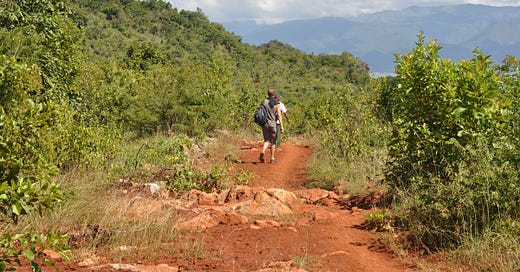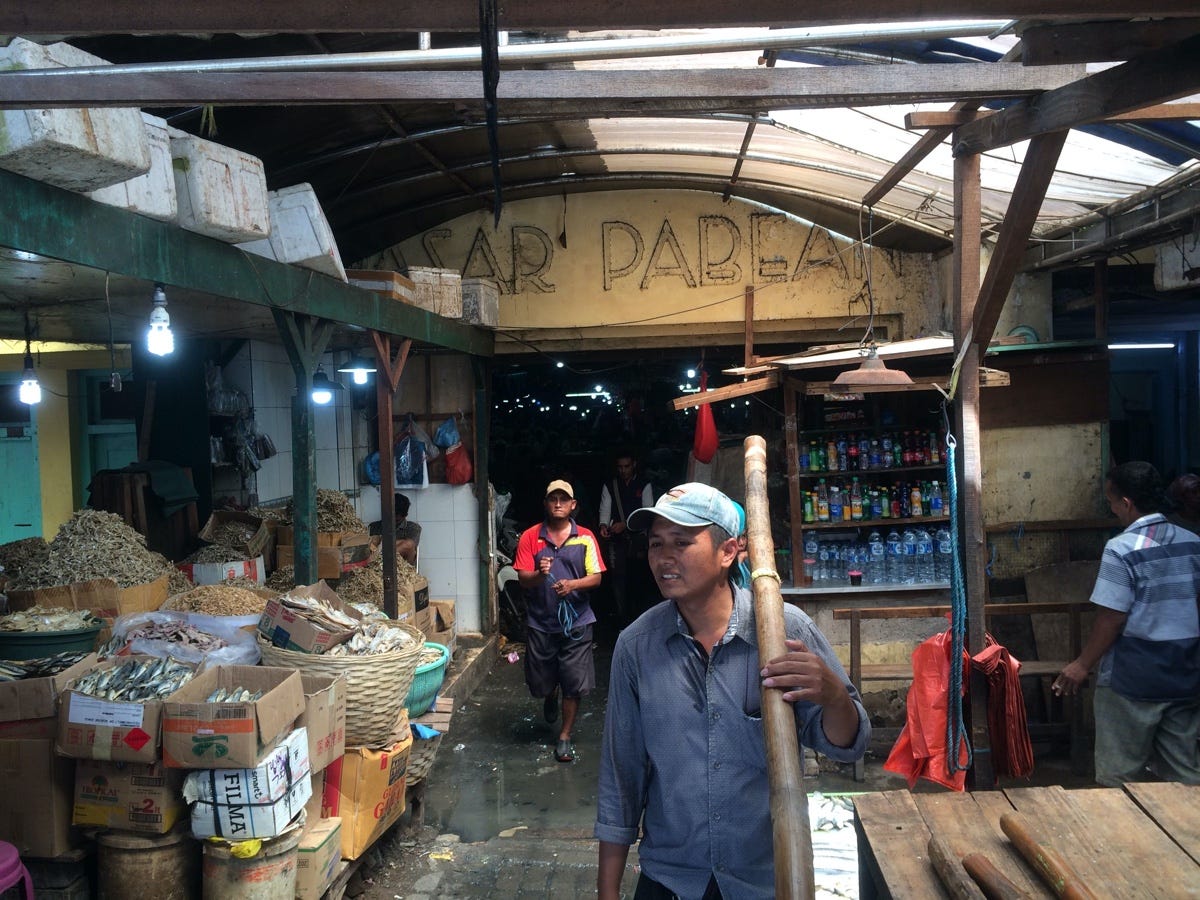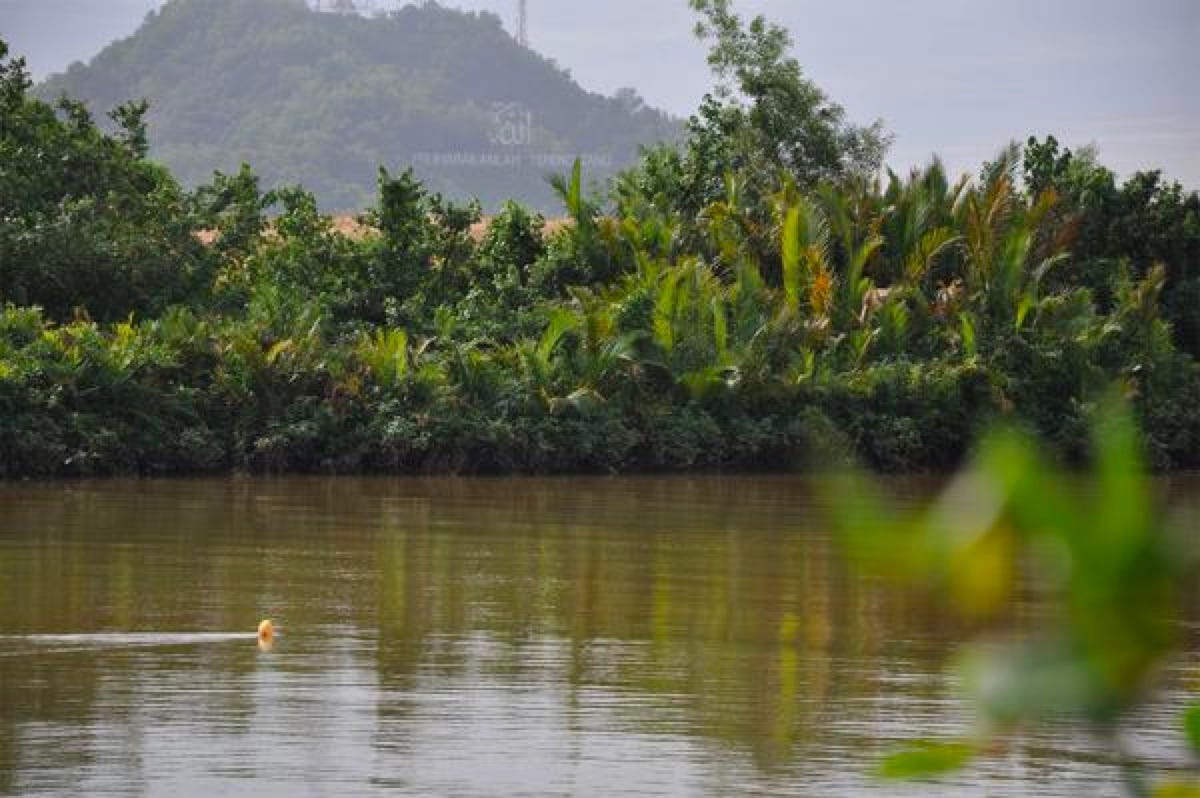The other day on paid–for Couchfish I wrote, talking about Ho Chi Minh City, that it was a “great walking city”. Many did not agree. Later, I tweeted “What is the most interesting/unexpected thing you found walking in a foreign city?”
Unfortunately auto–correct on my phone, turned “walking” into “wanking”. You can imagine the responses—they were not helpful.
Just keep on walking. On the Kalaw to Inle trek. Photo: Stuart McDonald.
Think of travel as a hierarchy of movement. Something like flying > trains > buses > cars > motorbikes > bicycles > walking > in bed at home. Each has its pros and cons. Some are fast, some are fun, some are neither, but I think walking is best.
So, here are some discoveries I’ve made along the way on two feet.
Burma: Walk to flowers and find balloons
Years ago I did the three–day Kalaw to Inle Lake trek in Burma. The selling point was a rural slice of the country side and homestay style accommodation. The walk was described as easy, though long—the full trek was about 60 km. Expect rolling hills, people said, and that was what we got. What I didn’t expect, were rolling fields of tree marigolds. With huge and clear blue skies and a distant ridge looked like it was resting in a bed of yellow pillows, it was memorable to say the least.
About to send a balloon aloft at Taunggyi. Photo: Stuart McDonald.
After the trek, I was walking around Nyaung Shwe and got talking to some other walking travellers. They invited me to join them for a visit to the Taunggyi Balloon Festival. It rivals the Rocket Festival in Thailand for the title of most insane public event I’ve ever seen. I didn’t even know it was on till I met the other travellers. Always walk—always talk.
Cambodia: Walk across an island
When the vomit comet from Koh Kong pulled in to Koh S’dach on Cambodia’s south coast, I asked if there was accommodation. Told there was, I jumped off—everywhere is worth a night and all that. The accommodation in the village was no great shakes. So I walked over the (thankfully) small island and found a half–baked guesthouse.
All aboard the vomit comet. Photo: Stuart McDonald.
The place was a dump, but there was a bed and a little beach good enough to get into the crystal water from. An added reason to get underwater was that then I couldn’t hear the karaoke. Despite exploring the entire island on foot, I never saw another foreign face.
Indonesia: Walk to East Africa (kind of)
After Jakarta, Surabaya is the largest city in Indonesia. It would be fair to say it doesn’t scream out “walking city”. That said, I found it to be a terrific walking city, with plenty of sights I’d never have found if not walking.
Pasar Pabean. What a market. Photo: Stuart McDonald.
Peneleh Graveyard, the House of Hadji Oemar Said Tjokroaminoto were both fascinating. Despite being a modern city, I found a stunning Art Nouveau panel on a dilapidated building. Later I learned it was the work of Jan Toorop, a Dutch Indonesian painter. Best of all though, Pasar Pabean, in the heart of the city’s East African quarter was all a wet market could be—and more. When I told friends from Surabaya about it later—they’d never heard of it!
Laos: The people you re–meet when on foot
While Vientiane now has a flash boardwalk stretch by the Mekong, if was once a far more rustic affair. Lined with simple food stalls and with plenty of iced beer on hand, it was a great stretch to finish off a day at.
Time to re–meet some old friends. Sunset, Vientiane. Photo: Stuart McDonald.
Walking alone there one evening, I passed a table of four backpackers. I didn’t give them much of a look, till one called out to me. On hearing my name, I turned to see an English friend I had travelled with five years earlier on the Thai islands. How they even recognised me was beyond me, as I barely recognised them! A chance meeting which made for a fun few days—and if I’d not been walking, it would have never happened.
Malaysia: Walk to find a long–forgotten guesthouse
Kuala Terengganu doesn’t see many foreign travellers, and most it does stick to the south side of the river. So what was on the far side I wondered. To investigate I took a little boat across the river and started walking. Known for traditional boat building, there was a little bit of that on hand. I kept walking, then struck gold, a fall–down guesthouse.
The view from Awi’s. Photo: Stuart McDonald.
Awi’s Yellow House was literally about to fall down. In business since 1972, it felt like not a lick of work had been done on the place since. Naturally, I moved in that day. The aged wooden huts on stilts sat over the mangroves and the river slid past. Owner Awi was a great guy, very friendly and welcoming. He also provided a window into what Kuala Terengganu—and travel—used to be like.
Singapore: Walk the southern ridges
When I think Singapore and walking, I think of food. There is an alternative though—the Southern Ridges walk. The walk links up Mount Faber, Telok Blangah, Hort and Kent Ridge parks and finishes with Labrador Nature Reserve.
Walking in the woods, Singapore–style. Photo: Stuart McDonald.
A whole day lost taking in terrific scenery, impressive bridges, war history and enough to eat. My advice? Start early—earlier than I did. Take water too.
Thailand: Walk to an unexpected swim near Mae Lana
Down a small road to the north of Route 1095 between Soppong and Mae Hong Son lies Mae Lana. Asking at the guesthouse on what to do, he said “go walking”, so we did. We walked and walked, and walked some more. Along rice paddie walls, following dirt trails, random wandering. There were no signposts, no nothing. We found a hamlet and a teenager came out to say hello. He asked would we like to see the “lake”. Sure!
Thailand’s Mae Hong Son province is a great one for walking. Photo: Mark Ord.
It was about another hour from memory. Down a valley a bit then a hike up a ridge. We heard it before we saw it. A rock shelf, ten metres high, covered by a wide sheet of water that collected in a clear deep pool. There were no swings or Instagram props—to be fair this was in 1994, so Instagram didn’t even exist. Our guide said he needed to go, and left. Silence. With trees overhead, we ditched our cloths and swam in the pool. We were there for hours—and never saw another soul.
Vietnam: Walk the cities and the countryside
When I think of Vietnam and walking I always gravitate to the cities. Huế, Hanoi and Ho Chi Minh City are all excellent walking towns—but the countryside is no slouch either.
Pù Luông is not bad for a wander. Photo: Stuart McDonald.
Two spots, both accessible from Hanoi, offer some of the best rice terrace walking in Southeast Asia. Pù Luông to the west and Mù Cang Chải to the north. Both have plenty of places to stay, from homestays through to resorts, but the real appeal is free for all. While lodgings will steer you towards contrived Instagram–worthy spots, the real joy is just walking. Walk in any direction. Up a valley or down one. You’ll find rural scenes—be they farmers planting, kids with buffalo, or a tiny hamlet in the woods—and they’ll be your scenes, your discoveries.
And that’s what walking is all about. Discovering your own little find, be it a person, a meal, a sight or experience.
They’re the memories that really stick.
Got a travel memory that stuck thanks to a walk? Please share it in the comments!






















Share this post